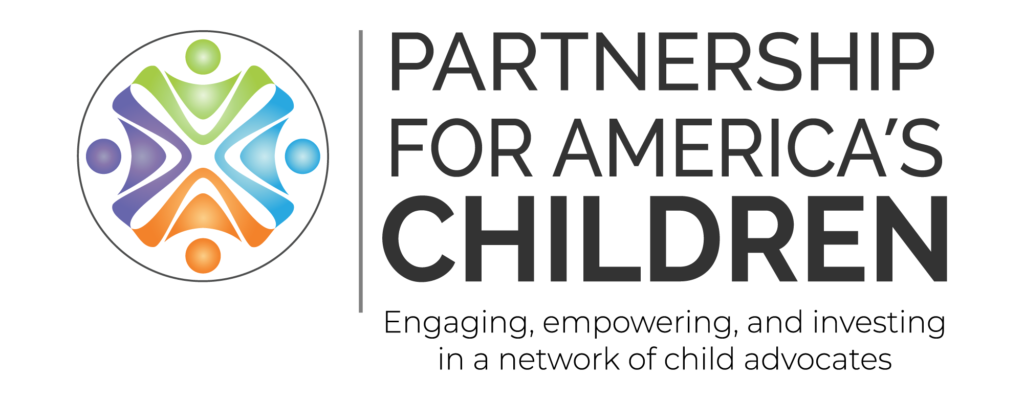Photo by Artem Kniaz via Unsplash
“Chambers of commerce are a terrific source of leadership on children’s issues,” says Sara Watson, founder and former National and Global Director of the business group ReadyNation. Sara has years of experience building collaborations between early childhood and business leaders. She recently helped Under 3 DC, a coalition of DC Action for Children, release a powerful report on the impact of child care shortages on DC’s economy, with the leader of the DC Chamber speaking at the release and providing an op-ed. In this interview, Sara shares some sage advice for child advocates looking to collaborate with Chambers of Commerce to advance kids’ issues.
Be prepared for success
“Business people can move very quickly,” said Sara. “They are very responsive to the data and evidence addressing any problem.” When Under 3 DC approached the DC Chamber to collaborate on child care issues, they scheduled a thirty minute meeting. “Within 15 minutes they said ‘I get it. This is very consistent with our mission as a chamber. Let me connect you to the right person,’ and it was over that quickly.”
Sara shared some great tips for how to be ready for a successful meeting with your local Chamber of Commerce. First, have the evidence ready about the specific benefit to the business, their employees, and their community. Bring the data to back up your issue. What is the specific opportunity for the business leader to play a role? Be honest about the politics of your issue. Who is for your proposal, and who’s against it?
Perhaps most importantly, have several clear and specific asks ready (and it should not be a fundraising ask!), so the business person can choose. Some great examples of an ask that business leaders can say yes to include:
- Can we write an article for the Chamber’s member newsletter?
- Would you do a Q&A together with us for a local media outlet?
- Will you write an op-ed about the issue? Know that advocates will need to support the writing of the op-ed, which needs to reflect the business leader’s voice and priorities.
- Would you sign a letter to policy-makers? Again, drafted in the appropriate voice and tone.
Starting a new partnership with business leaders
If your organization is looking to build new relationships with business leaders, there are some great places to start. First, consider collaborating with an existing group such as ReadyNation, which is actively mobilizing business leaders to support early childhood at the state and federal levels. Second, look to your local Chamber of Commerce – many are very active in education-related issues and other issues affecting kids and families.
Check out your state or local Chamber’s website to find out what issues are on their policy agenda and what committees and workgroups they have. “When a Chamber has an education or workforce committee, early childhood issues will often be under their purview,” says Sara Watson. “Your natural business allies have self-selected to work in that area. The committee structure shows you that they care about this issue.”
Many chambers have a membership category for NGO’s and/or nonprofit organizations. Joining the Chamber and getting active in the issue areas where you overlap is an important way to show that you are truly interested in collaboration and advancing the mission.
“Look for an issue that’s on their list that might not be natural for you, but might be something you could support, such as internet access,” says Sara. “It might not be your top topic, but it’s something that you can go to them and offer what you have to bring to the table, instead of always asking them to shift their priorities to your issue.”
Language matters
One of the most important things child advocates and early childhood leaders can do to partner effectively with businesses is to be aware of your language. Recognize that you often have the same goals – happy, healthy kids who grow up to be productive citizens – but you probably talk about them in very different ways. Make sure that the language your organization is using to advance your issues doesn’t inadvertently demonize businesses – closing the door on powerful potential allies.
“It can sometimes be too easy to think of business people as only being donors or opponents,” says Sara. “If you think about them that way, that will leak out into your language and your interactions, and that makes it very hard to build a bridge.”
Sara shared an anecdote about an organization that asked her for help finding collaborators in the business community to expand tax credits for kids. When she started digging, Sara found that the organization’s messaging had created a huge barrier. The organization was using language that blamed business leaders for policies that drove tax breaks only toward themselves instead of toward families. “You can’t say that on the one hand and then ask a business leader to join your efforts,” she stated.
Get out there and collaborate!
Advocacy for kids and families is the reason that early childhood leaders get up and go to work every day – but it’s just a tiny fraction of the day for the business leaders you want to partner with. Most CEOs have multiple fires to put out every day. Keep that in mind when you schedule a meeting, reach out with a contact, or when sharing an update. Get right to the point – and make an ask that they can say yes to!
Remember to make a proposition that is in the business leader’s voice (not yours), using language that is recognizable and comfortable to them. Offer a short menu of specific things they can do to advance the issue, and that are not donating money. “If you do that,” says Sara, “you can build a relationship, and you can leverage their reputation and standing as the unexpected messenger.”
Many thanks to Dr. Sara Watson of Watson Strategies for generously sharing her expertise and insights for this blog.

